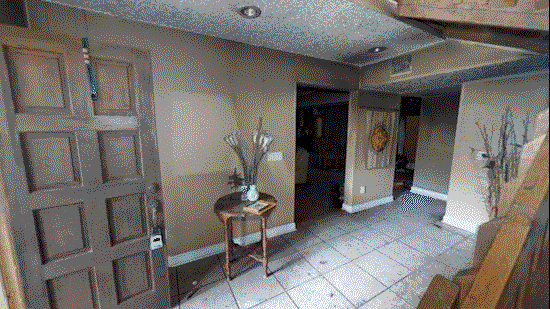Master Restoration Uses Digital Twins to Accelerate Estimates by 20% and Claims Processes by 30%
Master Restoration strives to be a leader in its Floridian community, empowering every homeowner they serve in the rebuilding of their property. The company values innovation, inspiring the adoption of Matterport 3D digital twins to reinvent its estimating processes and reshape how they do business.
Before adopting Matterport, Master Restoration’s estimating and claims processes were conducted to industry standards.
Historically, completing the scope of work onsite was the most accurate method of estimating a loss. Like most in the industry, Master Restoration’s estimators were visiting a high volume of losses, documenting conditions with 2D photos and manual measurements. On average, it took 2-3 days after completing site visits to write estimates. Adjusters, contractors, and homeowners were frustrated with the lengthy processes.

Documenting losses with digital accuracy
Eddy Lyons, Vice President of Business Development at Master Restoration observed that more than 12% of estimates had gross errors as a result of lost information due to inadequate notes and the gap in time between the site visit to estimation. As a result, project managers, estimators, and adjusters returned to sites to gather additional data to produce an accurate scope. Master Restoration knew they could help homeowners recover faster.
By adopting Matterport, estimators scan a high-fidelity 3D digital twin during the initial site visit, eliminating the need to return to the loss. The process has increased turnaround time of estimates by 20% and, by providing carriers with precise documentation, has reduced claims handling time.
“We immediately recognized that Matterport would provide the innovative edge to strengthen relationships with carriers, grow revenue, and lower operational costs,” Lyons said.
Matterport enables Master Restoration to coordinate effectively with insurance carriers. The digital twins Master Restoration supplies to carriers empower them to adjust losses remotely and reduce the need for field visits. With Matterport Measurement Mode, Master Restoration supplies carriers and contractors with precise spatial dimensions of any feature in a loss. Using Mattertags, Master Restoration identifies equipment and pre-existing conditions during the claims handling process, leaving little room for future disputes.
Digital tools empower a fast and effective disaster response team
With Matterport, Master Restoration documents and estimates losses in a whole new way. The company increased revenue by deploying field technicians, rather than estimators, to document losses. Using Matterport, desk estimators access 3D digital twins of the loss to virtually walk the property, scope, and validate losses.
Before Matterport, estimators had to overcome flooded roads and a lack of infrastructure to assess losses during catastrophic events.
“When Hurricane Michael swept the Florida coast, we deployed one estimator to document losses with Matterport, enabling our desk estimators to scope more losses faster than ever before,” Lyons said. “We reduced overhead costs of traditional storm response and estimation processes by 4X with Matterport.”
A snapshot of success
Since redefining the documentation and estimation workflow, Master Restoration submits to carriers faster, realizing a 9% boost in Emergency Management System estimates and an 11% increase on structural estimates.
“We’ve not only increased our revenue by leveraging digital twins to estimate losses, but we’ve also reduced our operating expenses by sharing them with carriers and adjusters to ensure estimates are approved faster,” Lyons said. “With Matterport, we see a direct correlation to a lift in our net revenue.”
In addition, Master Restoration has also realized:
a decrease in the need for reinspection from 12% of losses to zero.
a 37% reduction in the average time to settle with carriers.
a 23% cut in estimate time for EMS losses under $5,000.
an increase in employee satisfaction scores, particularly among estimators.
